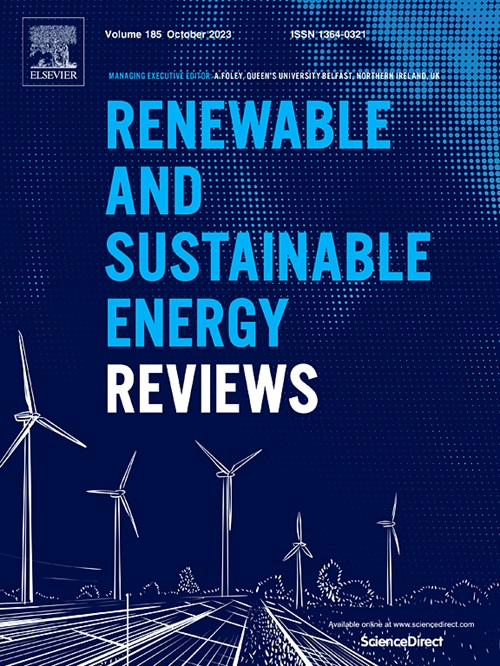Semi-thermophilic anaerobic digestion (41–49°C): A review of its potential for enhanced methane production and system stability
IF 16.3
1区 工程技术
Q1 ENERGY & FUELS
引用次数: 0
Abstract
The low methane production efficiency of mesophilic anaerobic digestion (MAD) and the stability issues associated with thermophilic anaerobic digestion (TAD) have become bottlenecks limiting the development of anaerobic digestion (AD) technologies. Recently, research focusing on the semi-thermophilic temperature range of 41–49 °C has suggested that this approach could effectively overcome these limitations. However, conflicting evidence regarding semi-thermophilic anaerobic digestion (STAD) has hindered the progress of related research and technological applications. This paper conducted a meta-analysis to evaluate the methane production efficiency of STAD, systematically comparing its system stability and kinetic parameters relative to both MAD and TAD. The findings revealed that STAD holds significant potential for enhancing both methane production efficiency and system stability. The observed high efficiency and stability in STAD may be attributed to the adaptive growth and metabolic capabilities of its diverse microbial communities, as well as the balance between acid-alkalinity conditions and hydrogen regulation. Based on the insights from this review, recommendations for optimization and future research were proposed. This review contributes to the re-evaluation of traditional temperature classifications in AD, offering new insights into the mechanisms and broader applications of STAD.
半嗜热厌氧消化(41-49°C):对其提高甲烷产量和系统稳定性的潜力的综述
中温厌氧消化(MAD)产甲烷效率低以及与热敏厌氧消化(TAD)相关的稳定性问题已成为制约厌氧消化(AD)技术发展的瓶颈。最近,对41-49°C半嗜热温度范围的研究表明,这种方法可以有效地克服这些限制。然而,关于半嗜热厌氧消化(STAD)的矛盾证据阻碍了相关研究和技术应用的进展。本文通过meta分析评价了STAD的产甲烷效率,系统比较了其相对于MAD和TAD的系统稳定性和动力学参数。研究结果表明,STAD在提高甲烷生产效率和系统稳定性方面具有巨大的潜力。在STAD中观察到的高效率和稳定性可能归因于其多种微生物群落的适应性生长和代谢能力,以及酸碱条件和氢调节之间的平衡。在此基础上,提出了优化和未来研究的建议。本文综述有助于对AD的传统温度分类进行重新评价,为STAD的发病机制和更广泛的应用提供新的认识。
本文章由计算机程序翻译,如有差异,请以英文原文为准。
求助全文
约1分钟内获得全文
求助全文
来源期刊

Renewable and Sustainable Energy Reviews
工程技术-能源与燃料
CiteScore
31.20
自引率
5.70%
发文量
1055
审稿时长
62 days
期刊介绍:
The mission of Renewable and Sustainable Energy Reviews is to disseminate the most compelling and pertinent critical insights in renewable and sustainable energy, fostering collaboration among the research community, private sector, and policy and decision makers. The journal aims to exchange challenges, solutions, innovative concepts, and technologies, contributing to sustainable development, the transition to a low-carbon future, and the attainment of emissions targets outlined by the United Nations Framework Convention on Climate Change.
Renewable and Sustainable Energy Reviews publishes a diverse range of content, including review papers, original research, case studies, and analyses of new technologies, all featuring a substantial review component such as critique, comparison, or analysis. Introducing a distinctive paper type, Expert Insights, the journal presents commissioned mini-reviews authored by field leaders, addressing topics of significant interest. Case studies undergo consideration only if they showcase the work's applicability to other regions or contribute valuable insights to the broader field of renewable and sustainable energy. Notably, a bibliographic or literature review lacking critical analysis is deemed unsuitable for publication.
 求助内容:
求助内容: 应助结果提醒方式:
应助结果提醒方式:


